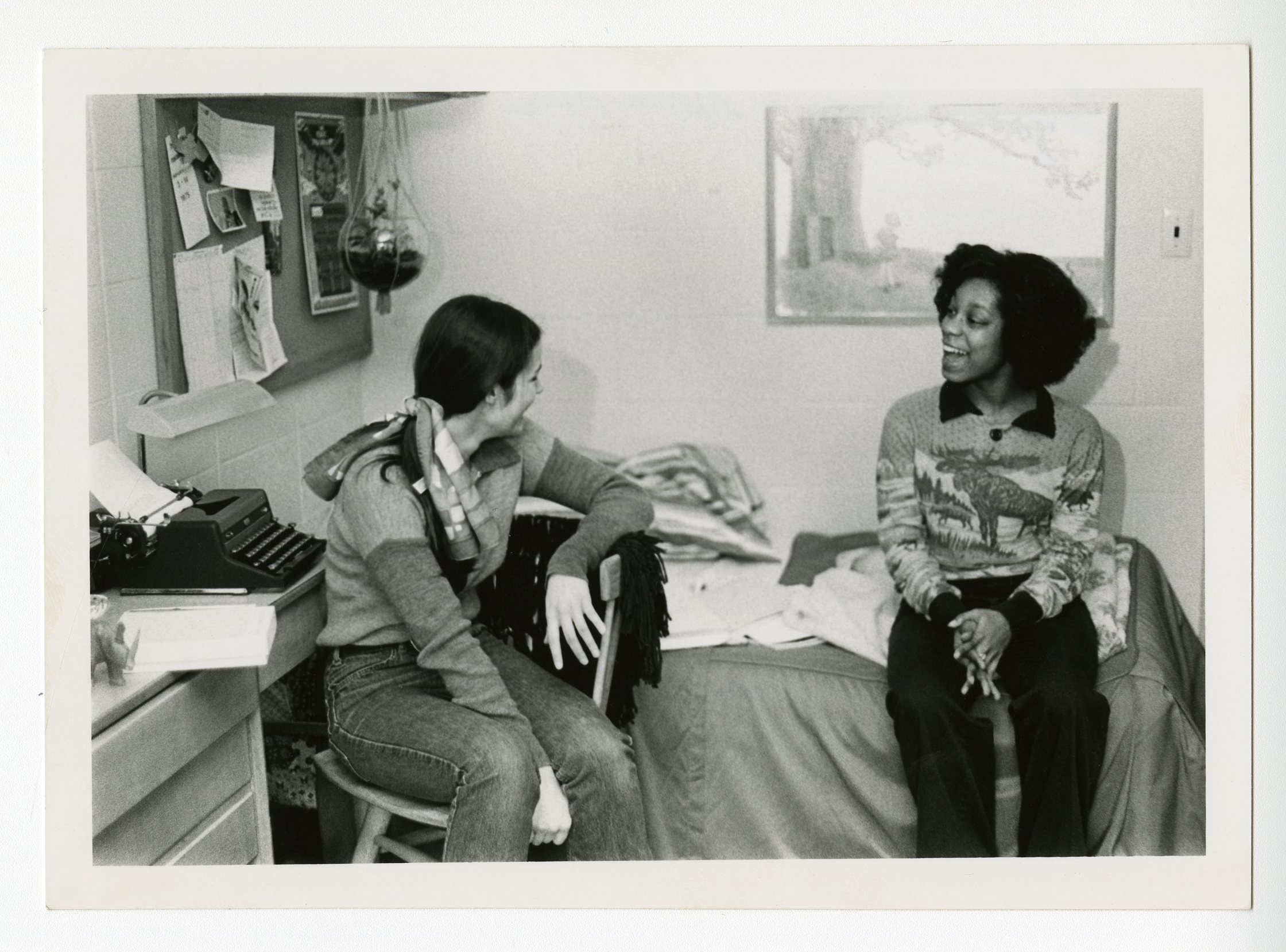1960
Student Housing
Women's Hours: Double Standards Continue

Steady growth continued for Macalester in the 1960s. Dupre Hall and Doty Halls, built to be men’s and women’s dormitories respectively, both opened during the 1964-65 school year.1 Both featured double-loaded corridors— a sign that administrators wanted to continue exercising careful control over students and their social lives.
However, by the 1960s, Macalester students were increasingly questioning the ways in which campus was segregated by gender. Women were still subject to convoluted curfew rules, with the ability to stay out late some nights but not others, while men were free to come and go from their dorms as they pleased. Both men and women had reasons to oppose the rules; female students argued that they were old enough to be independent and to make their own decisions while at college and male students argued that the school’s social life was hindered when women had to return earlier to their dorms or risk getting in trouble.

The issue of “women’s hours” was a recurring one throughout the fifties and sixties. As early as 1953, a Mac Weekly poll showed that 74% of students were dissatisfied with the implementation of women’s hours.2 That dissatisfaction continued to simmer over the next several years, even as some reforms were made. Students often raised the issue during student government elections or in opinion articles for the Mac Weekly, but change was slow to come.3 Other students used more guerilla tactics to protest the rules. A Mac Weekly article from April 1966 explains that the sign-in cards for the residents of Wallace Hall had been stolen, destroying the record of whether or not the students had used their limited number of “grace minutes” or “one o’clocks.”4 Eventually, restrictions for women over 21 were removed completely, but students in their first and second year at Macalester still faced stricter rules. In 1968, the women’s hours system was significantly scaled back after successful votes in the student government.5 The new policy only gave curfews to first semester freshmen, whose restrictions would be lifted by second semester unless their parents objected.6 Women’s curfews were finally eliminated during the 1969-1970 school year, when the college made the decision to offer co-ed halls for the first time. After years of division, complicated rules, and dissatisfaction from students, the college eliminated one of its longest standing practices and broke down one of the most significant barriers between students on campus.
-
Macalester College, “Macalester College Bulletin,” College Catalogs, Macalester College Archives, 1964, https://digitalcommons.macalester.edu/catalogs/93/. ↩
-
Jack Edwards, “Dorm Hours Disliked,” Mac Weekly, April 10, 1953, Macalester College Archives. ↩
-
“Prexy Candidates Present Plans,” Mac Weekly, April 22, 1955, Macalester College Archives, Jon Kuklish, “Which Way Will the Door Swing?”, Mac Weekly, February 18, 1966, Macalester College Archives, and Anne Winter, “Macalester Women Want Right to Make Own Decisions,” Mac Weekly, February 25, 1966, Macalester College Archives. ↩
-
“Grace minutes” refers to a limited number of minutes each student could use if they were running late in an emergency. “One o’clocks” refers to the similarly limited number of nights students could stay out later— until 1:00 am. “Cards Swiped!”, Mac Weekly, April 29, 1966, Macalester College Archives. ↩
-
“Women’s Hours, Open Houses, to Go into Effect,” Mac Weekly, November 22, 1968, Macalester College Archives. ↩
-
Ibid. ↩